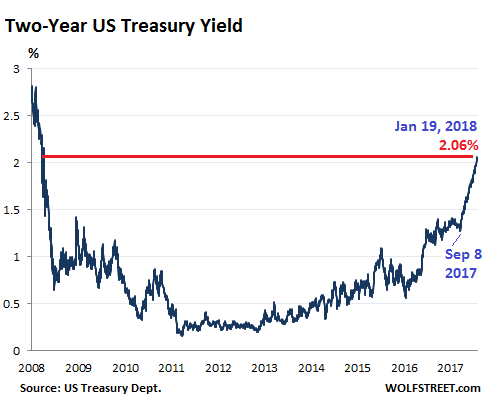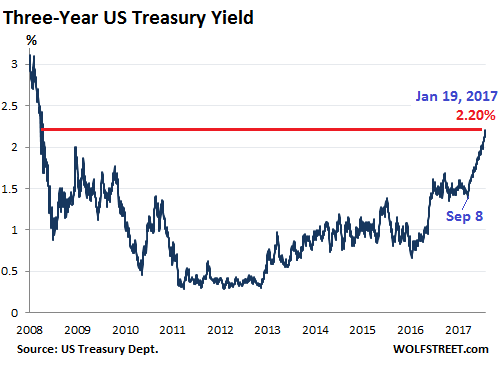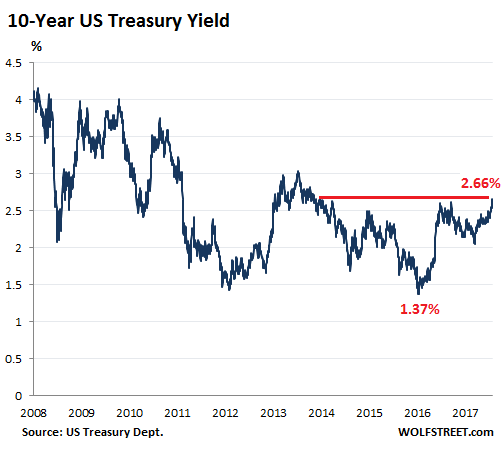
Vincent van Gogh Lane near Arles 1888

Maybe it’s better this way: expose the failing systems. Bring out your dead.
• US Government Shutdown Begins As Spending Bill Fails In Senate (R.)
The U.S. government shut down at midnight on Friday after Democrats and Republicans failed to reach a last-minute deal to fund its operations, divided in a bitter dispute over immigration and border security. In a dramatic late-night session, senators blocked a bill to extend government funding through Feb. 16. The bill needed 60 votes in the 100-member Senate but fell short, with only 50 supporting it. Most Democrats opposed the bill because their efforts to include protections for hundreds of thousands of mostly young immigrants known as Dreamers failed. Huddled negotiations by Senate Majority Leader Mitch McConnell and Senate Democratic leader Chuck Schumer in the last minutes before midnight were unsuccessful, and the U.S. government technically ran out of money at midnight.
The shutdown formally began on Saturday, the first anniversary of President Donald Trump’s inauguration. Trump immediately sought to blame Democrats. “Tonight, they put politics above our national security, military families, vulnerable children, and our country’s ability to serve all Americans,” the White House said in a statement. It also said it would not discuss immigration until the government is up and running again. “We will not negotiate the status of unlawful immigrants while Democrats hold our lawful citizens hostage over their reckless demands. This is the behavior of obstructionist losers, not legislators.” In return, Schumer pointed the finger directly at Trump. “It’s almost as if you were rooting for a shutdown and now we’ll have one and the blame should crash entirely on President Trump’s shoulders,” he said.
Until a funding deal is worked out, scores of federal agencies across the country will be unable to operate, and hundreds of thousands of “non-essential” federal workers will be put on temporary unpaid leave. The Republican-controlled House of Representatives passed a stopgap funding measure on Thursday. But Republicans then needed the support of at least 10 Democrats to pass the bill in the Senate. While five Democrats ended up voting for the measure, five Republicans voted against it. Democratic leaders demanded that the measure include protections from deportation for about 700,000 undocumented immigrants known as Dreamers who arrived in the United States as children.
Despite bipartisan negotiations, Republican leaders refused to include those protections, and neither side was willing to back down. McConnell and Schumer insisted they were still committed to finding an agreement that restores government funding as soon as possible. Trump, who had made strict measures on immigration a cornerstone of his presidential campaign, last week rejected a bipartisan proposal, saying he wanted to include any deal for Dreamers in a bigger legislative package that also boosts funding for a border wall and tighter security at the U.S. border with Mexico.
Read more …

A lion’s den indeed.
• Trump To Tout US Economy, Urge Fair Trade At Elite Davos Forum (R.)
U.S. President Donald Trump will be entering something of a lion’s den when he visits the elitist enclave of Davos next week, rubbing shoulders with the same “globalists” that he campaigned against in winning the 2016 election. Aides said some of Trump’s advisers had argued against him attending the World Economic Forum in order to steer clear of the event, which brings together political leaders, CEOs and top bankers. But in the end, they said, Trump, the first sitting U.S. president to attend the forum since Bill Clinton in 2000, wanted to go to call attention to growth in the U.S. economy and the soaring stock market. A senior administration official said Trump is expected to take a double-edged message to the forum in Switzerland, where he is to deliver a speech and meet some world leaders.
In his speech, Trump is expected to urge the world to invest in the United States to take advantage of his deregulatory and tax cut policies, stress his “America First” agenda and call for fairer, more reciprocal trade, the official said. During his 2016 election campaign, Trump blamed globalization for ravaging American manufacturing jobs as companies sought to reduce labor costs by relocating to Mexico and elsewhere. “Globalization has made the financial elite who donate to politicians very wealthy. But it has left millions of our workers with nothing but poverty and heartache,” he said on June 28, 2016, in Pennsylvania. Trump retains the same anti-globalist beliefs but has struggled to rewrite trade deals that he sees as benefiting other countries.
Read more …

This is going to hurt.
• What Will Rising Mortgage Rates Do to Housing Bubble 2? (WS)
The US government bond market has further soured this week, with Treasuries selling off across the spectrum. When bond prices fall, yields rise. For example, the two-year Treasury yield rose to 2.06% on Friday, the highest since September 2008. In the chart, note the determined spike of 79 basis points since September 8, 2017. That was the month when the Fed announced the highly telegraphed details of its QE Unwind. September as month of the QE-Unwind announcement keeps cropping up. All kinds of things began to happen, at first quietly, without drawing much attention. But then the trajectory just kept going.

The three-year yield, which had gone nowhere for the first eight months of 2017, rose to 2.20% on Friday, the highest since October 1, 2008. It has spiked 82 basis points since September 8:

The ten-year yield – the benchmark for financial markets that most influences US mortgage rates – jumped to 2.66% late Friday. This is particularly interesting because the 10-year yield had declined from March 2017 into August despite the Fed’s three rate hikes last year, and rising short-term yields. At 2.66%, the 10-year yield has reached its highest level since April 2014, when the “Taper Tantrum” was winding down. That Taper Tantrum was the bond market’s way of saying “we’re shocked and appalled,” when Chairman Bernanke dropped hints the Fed might eventually begin tapering what the market had called “QE Infinity.” The 10-year yield has now doubled since the historic intraday low on July 7, 2016 of 1.32% (it closed that day at 1.37%, a historic closing low):

Friday capped four weeks of pain in the Treasury market. But it has not impacted yet the corporate bond market, and the spread in yields between Treasuries and corporate bonds, and particularly junk bonds, has further narrowed. And it has not yet impacted the stock market, and there has been no adjustment in the market’s risk pricing yet. But it has impacted the mortgage market. On Friday, the average 30-year fixed-rate mortgage with conforming loan balances ($417,000 or less) for top-tier borrowers, according to Mortgage News Daily, ended at 4.23%, the highest in nine months. But historically, 4.25% is still very low. And likely just the beginning of a long, uneven climb higher. And the impact on mortgage payments can be sizable. When rates rise for example from 3.5% to 4.5%, the payment for a $250,000 mortgage jumps by $144 to $1,267 a month. This can move the payment out of reach for households that have trouble making ends meet.
Read more …

Rising markets and fever as flu symptoms.
• Fever Pitch (Jim Kunstler)
In case you’re worked up about the looming federal government shut-down, this is exactly how we’re supposed to roll in the long emergency: everything organized at the gigantic scale is going to wobble and fail. It’s nature’s way of saying, “get smaller, get realer, scale down, and get local.” The catch is, we probably won’t listen to nature. Instead, we’ll just behave like bystanders and do nothing until the full force of failure is upon us, just as we’re doing with climate change — the tragedy of the commons at planetary scale. The failure of national party politics is deep and systemic, as you would expect from activities nurtured in a shit-hole called Washington, corruption being the manifestation of sepsis. The lethal vector of this illness is money.
There’s the money flowing into the “campaign funds” (so-called) of congressmen and senators, of course, but there’s also the “money” that is flowing in and out of the leviathan government — a whole lot of it is not really there. It’s a figment of promises to pay back loans on top of a monumental heap of past promises that will never be kept. The threatened government shutdown is just a symptom of the illness: a society doing things out of scale, trying to run its excessive activities by check-kiting and accounting fraud. What could go wrong? Not the stock and bond markets, I’m sure. Though… wait a minute… that hockey-stick surge in equities looks a little bit like the action of a thermometer measuring the rising body temperature of a very sick patient.
From 25,000 to 26,000 on the Dow — in what? seven days? — is kind of like the flu victim going from 98.6 to 105 after onset. And we know what happens to humans up around the 105 Fahrenheit body temperature level: the brain starts to sputter and smoke. Soon, it’s lights out and don’t let your karma smack you on the butt going through the exit.
Read more …

State within the state. F*ck the courts.
• NSA Deleted Surveillance Data Court Had Ordered It To Preserve (Pol.)
The National Security Agency destroyed surveillance data it pledged to preserve in connection with pending lawsuits and apparently never took some of the steps it told a federal court it had taken to make sure the information wasn’t destroyed, according to recent court filings. Word of the NSA’s foul-up is emerging just as Congress has extended for six years the legal authority the agency uses for much of its surveillance work conducted through U.S. internet providers and tech firms. President Donald Trump signed that measure into law Friday. Since 2007, the NSA has been under court orders to preserve data about certain of its surveillance efforts that came under legal attack following disclosures that President George W. Bush ordered warrantless wiretapping of international communications after the 2001 terrorist attacks on the U.S.
In addition, the agency has made a series of representations in court over the years about how it is complying with its duties. However, the NSA told U.S. District Court Judge Jeffrey White in a filing on Thursday night and another little-noticed submission last year that the agency did not preserve the content of internet communications intercepted between 2001 and 2007 under the program Bush ordered. To make matters worse, backup tapes that might have mitigated the failure were erased in 2009, 2011 and 2016, the NSA said. “The NSA sincerely regrets its failure to prevent the deletion of this data,” NSA’s deputy director of capabilities, identified publicly as “Elizabeth B.,” wrote in a declaration filed in October. “NSA senior management is fully aware of this failure, and the Agency is committed to taking swift action to respond to the loss of this data.”
In the update Thursday, another NSA official said the data were deleted during a broad, housecleaning effort aimed at making space for incoming information. “The NSA’s review to date reveals that this [Presidential Surveillance Program] Internet content data was not specifically targeted for deletion,” wrote the official, identified as “Dr. Mark O,” “but rather the PSP Internet content data matched criteria that were broadly used to delete data of a certain type … in response to mission requirements to free-up space and improve performance of the [redacted] back-up system. The NSA is still investigating how these deletions came about given the preservation obligations extant at the time. The NSA, however, has no reason to believe at this time that PSP Internet content data was specifically targeted for deletion.”
Read more …

With Turkey starting an extensive bombing campaign, Syria could explode once again.
• Russia Accuses US Of “Carving Out Alternative Government” In Syria (ZH)
Russia’s Foreign Minister Sergey Lavrov has accused the United States of working to carve out “an alternative government” on Syrian soil in statements made at a UN press briefing related to the recent Turkish military build-up poised to assault Syrian Kurdish areas of Northern Syria. Lavrov’s words come after Secretary of State Rex Tillerson pledged in a speech on Wednesday that US military forces would remain in Syria indefinitely until various objectives are met, which include Syrian government transition and the curtailing of Iran’s influence. Lavrov said “It’s a fact that US forces are seriously involved in creating alternative government bodies on vast part of the Syrian territory. And this, of course, absolutely contradicts their own obligations, which they committed to on numerous occasions, including at the UN Security Council, on maintaining the sovereignty and the territorial integrity on Syria.”
The Russian FM further accused the US of contradicting its previous claim that US troops – which number at least 2,000 according to recent Pentagon statements – were only in Syria to fight the Islamic State and not wage a proxy war against the Syrian government and its allies. The prior US policy of regime change in Syria, which began under the Obama administration and intensified under a CIA program, was something many analysts perceived that President Trump had abandoned – consistent with earlier campaign promises. In the summer of last year Trump shut down the CIA program – widely reported to be the agency’s largest covert program – even while boosting support for the Pentagon program to arm and train the predominately Kurdish Syrian Democratic Forces (SDF).
“Rex Tillerson told me many times that the only reason for their presence there [in Syria] is defeating Islamic State (IS, formerly ISIS/ISL). Now they have some much more long-standing plans,” Lavrov said further of the inconsistency in US policy. “We will have to take this into account and look for solutions that won’t allow the destruction of Syrian sovereignty.”
Read more …

Bit late, perhaps?
• Europe Must Wake Up To Drastic Consequences Of A Hard Brexit (Joris Luyendijk)
Because it is such a riveting clown show with new crazy episodes almost every day, Europeans can be forgiven for ignoring the fact that Brexit is going to hurt them too. But as the date of Britain’s departure comes closer and Theresa May’s government continues its kamikaze policy of demanding the politically unthinkable from the EU, it is time for Europeans to wake and begin preparing for the worst. On Thursday the Dutch government published a report drawn up by the consultancy firm KPMG analysing the consequences of a “no-deal” Brexit in which the UK leaves the EU without an agreement on 29 March 2019.
Here are the practical implications and cold numbers behind the hot-headed rhetoric about no deal with the EU being “better than a bad deal” for Britain: should the UK “crash” out of the EU by late March 2019 the Dutch companies trading with the UK will have to secure a total of no less than 4.2m exporting and 750,000 importing licences. If by this time both states have a functioning customs system in place – a big if for this consistently incompetent UK government – costs for companies are between €80 and €130. That is per licence. The price tag for all this new red tape is €600m for the Dutch side alone. This excludes the costs of new export and import tariffs, VAT and other new “sector-specific” barriers for trading with the UK.
The 35,000 small and medium-sized businesses unused to trading with non-EU countries also face an estimated cost of €20,000-€50,000 to adapt their IT systems. Added to this, warns the report, must be the likely effects of the inevitable economic slowdown, or worse, in Britain. When the country leaves without a deal it must “fall back” on the minimal WTO rules for trade. But financial services and aviation fall outside the WTO regime, meaning that after a British no-deal departure both sectors must stop trading with the EU overnight. Between Amsterdam Schiphol airport and London alone there are currently 60 flights a day – one every 15 minutes.
Read more …

“The richest 10% spent more on wine per week (£9.40) than the poorest 10% spent on water..”
• UK Banks Turn Off Lending Taps To Households (G.)
There is little for the average household to cheer these days as inflation crushes paltry earnings increases. Inflation is running at 3% while wage rises can manage no more than 2.5%. Worse for the average household, the banks are beginning to turn off the lending taps that have allowed them to boost their incomes with cheap debt. Things were better in the year to April 2017, according to the number crunchers at the Office for National Statistics, who have lifted the lid on Britain’s spending habits in their annual family spending report. It shows that average weekly household spending clawed its way back from the depths of the 2009 recession to exceed the pre-crisis level for the first time.
This slice of good news, albeit five or six years later than many economists thought it would happen, disguises how the better off have thrived compared to those on the bottom rung of the income ladder. For instance the richest 10% spent more on wine per week (£9.40) than the poorest 10% spent on water (£7.30). In the same vein, the richest 10% spent £59.40 on “furniture and furnishings, carpets and other floor coverings” to almost match how much the poorest 10% spent on rent (£62.70). Challenging the idea that the poorest waste their money on booze and cigarettes, the survey found that the richest 10% devote twice as much of the weekly shop (£17.50) to “alcoholic drinks, tobacco and narcotics” as the poorest. But it is the new rich, the 65- to 74-year-olds that really catch the eye.
Their spending might not match that of the top 10%, yet it significantly powers ahead of anything the average 20-something can muster on areas like entertainment and recreation. The figures show that people in the 10 years from their 65th birthday go on a spending binge that means devoting nearly a fifth of their total expenditure on recreation and culture, double the 10% spent by the under-30s. This is the final salary pension bonanza that can only be described as a once in a generation spending boost. The same applies to those of all ages on below average incomes. They increased their spending by a startling 7% on the previous year, far more than the 1% increase across the richest half of households. Unfortunately they managed this largely by running down savings and taking on extra debt.
As banks, under instruction from the financial regulator, rein in their lending, debt-fuelled spending should be considered a one-off boon, just like the final salary payout. However, that seems unlikely. Banks remain dependent for profit on lending.
Read more …

Another bunch of lies that will go unpunished.
• The Carillion Whitewash (Coppola)
The Carillion whitewash has begun. Carillion’s interim CEO, Keith Cochrane, is spinning the line that had banks not pulled funding, its collapse could have been averted. And the Financial Times has released details of a letter Carillion sent to the Government at the beginning of January, in which it asked for short-term advances to tide it over while it underwent restructuring. Labour MP Pat McFadden has written to the Treasury Secretary asking whether it would have been more cost-effective for the U.K. Government to support Carillion, rather than allowing it to collapse. This looks to me like a campaign to deflect blame from Carillion’s management to its lenders and customers. We are being led to believe that it wasn’t insolvent, it was just illiquid, and depriving it of short-term funds caused a completely unnecessary collapse.
Deliciously, the bank Cochrane principally accuses of precipitating Carillion’s collapse by depriving it of funds is RBS, which was rescued at taxpayer expense in the 2008 financial crisis. Something tells me Cochrane’s fingering of RBS is no accident. For a bailed-out bank to refuse to provide a major Government contractor with short-term funds looks at best ungrateful and at worst insulting. Of course, RBS is itself a past master at playing the “we’re not insolvent, we are just illiquid” game. On the day that RBS failed, in September 2008, RBS’s CEO, Fred Goodwin, insisted that the bank was solvent. “We don’t have a capital problem,” he said. “We have a liquidity problem. All we need is short-term cash”.* But in fact, RBS was deeply insolvent. Rescuing it cost the U.K. Government £45bn, and RBS has lost a further £58bn since. Nearly ten years after the crisis, it is still in majority public ownership.
The similarity to RBS’s collapse is striking. Less than a week after Carillion’s failure, we now know that it is deeply insolvent. A couple of days after it filed for compulsory liquidation, Carillion’s unsecured bonds were trading at only 2.4% of par: This is an extraordinary writedown. It implies that bondholders expect to get back almost none of their investment. And this is senior unsecured debt, not subordinated debt or equity. The holders of anything more junior have already been wiped.
Read more …

All of a sudden everyone wakes up at the same time. But why have supermarkets and Coca Cola never done anything about it? And what are the odds they will once the atttention dies down?
• Hundreds Of UK MPs Call On Supermarkets To Scrap Plastic Packaging (G.)
Two hundred cross-party MPs are calling on heads of the major supermarkets to eliminate plastic packaging from their products by 2023. The MPs, who are from seven political parties, have written to Tesco, Sainsbury’s, Morrisons, Asda, Waitrose, Aldi, Lidl, Budgens and Marks & Spencer urging them to scrap plastic packaging. They wrote after the Guardian revealed this week the major supermarkets in the UK create more than 800,000 tonnes of plastic packaging waste – well over half the household plastic waste – each year. Six of the major supermarkets refused to reveal the amount of plastic packaging they put on to the market, saying the information was commercially sensitive. Analysis by Eunomia environmental consultants used figures provided by Aldi and the Co-op – the only chains to release public figures on their plastic tonnage – and the market share of each supermarket to estimate how much plastic packaging the chains produce each year.
This week, Iceland announced it would stop plastic packaging on its own brand products by 2023. Catherine West, Labour MP for Hornsey and Wood Green, who is behind the letter, said: “Vast amounts of plastic are ‘used’ for merely a few seconds before being discarded. “We have a moral duty to tackle this disposable culture. As such, I welcome the recent announcement from Iceland supermarkets … and I’m delighted that MPs from all parties are supporting my call for other retailers to follow suit.” Waitrose announced on Friday it would no longer use black plastic for its meat, fish, fruit and vegetables by the end of this year, and that all Waitrose products would be free of black plastic by the end of 2019. Black plastic cannot be recycled under current UK systems.
Each year it is estimated that more than 300m tonnes of plastic are produced globally. The Guardian revealed recently that plastic production is set to soar over the next 10 years. On Friday Coca-Cola announced a new goal to collect and recycle the equivalent of 100% of the packaging it sells globally by 2030. Coca-Cola said: “Given the size and scope of this challenge, we expect to invest in new packaging innovations and local collection and recycling systems, as well as consumer education and awareness programs.”
Read more …

Good to know your history. Society would be at least as helpless now as 100 years ago, Better medicine, but also 100 times more mobility. And that’s what kills.
• The Untreatable: The Centenary of Spanish Flu (LRB)
This year marks the centenary of Spanish flu, the most deadly pandemic in human history. It is estimated that five hundred million people contracted it – a third of the global population in 1918 – and that between fifty and a hundred million of them died. Asians were thirty times more likely to die than Europeans. The pandemic had some influence on the lives of everyone alive today. Donald Trump’s grandfather Friedrich died from it in New York City. He was 49. His early death meant that his fortune passed to his son Fred, who used it to start a New York property empire. My wife’s great-grandmother died from it in Verona; her grandfather, aged eight, had to leave school and find work to support the family. Emilio died in 2011 aged 101.
When I told a friend, the writer Andrew Greig, that I was writing this piece, he told me that his father, born in 1899, came down with Spanish flu while on leave from the war in France. ‘His convalescence delayed his return to the front, where his battalion was all but wiped out,’ Andrew said. ‘He always insisted Spanish flu saved his life, and without it, I suppose I wouldn’t be alive either.’ Laura Spinney’s book attempts to collate what is known about the pandemic, and takes a stab at examining its legacy: ‘The flu resculpted human populations more radically than anything since the Black Death,’ she writes. ‘It influenced the course of the First World War and, arguably, contributed to the second. It pushed India closer to independence, South Africa closer to apartheid, and Switzerland to the brink of civil war. It ushered in universal healthcare and alternative medicine, our love of fresh air and our passion for sport.’
The majority of deaths came in the three months between September and December 1918. The war probably didn’t spawn it, but certainly helped it spread: the US lost more soldiers to flu than to the war in part because so many of them spent weeks coughing together in barracks and transports on their way to Europe. Britain and Italy suffered between two and three times more deaths from the war than from the flu, while Germany’s war deaths outnumbered flu deaths six to one. Spinney quotes historians who claim that flu struck Germany harder than Britain or France; Erich Ludendorff was convinced it had robbed Germany of victory. The spread of Spanish flu was quickened by the railway and steamer lines that girdled the planet, starkly illuminating global inequalities in security, nutrition and access to medical care.
In India 6% of the population died; in Fiji 5%; in Tonga 10%. In Western Samoa, for reasons that aren’t entirely clear, more than 20% of the population died. Even harder hit were the Alaskan Inuit, with a death rate between 25 and 50%: in some small Alaskan communities everybody died. Koreans and Japanese were infected at the same rate, but the Koreans, subject to chronic malnutrition, were twice as likely to die. In the US, Italian immigrants died at twice the background rate (the Italian neighbourhoods of New York had a density of five hundred per acre, ten to a room), while black populations were the least affected. ‘As far as the “Flu” is concerned the whites have the whole big show to themselves,’ J. Franklin Johnson wrote to the Baltimore Afro-American.
Read more …






















